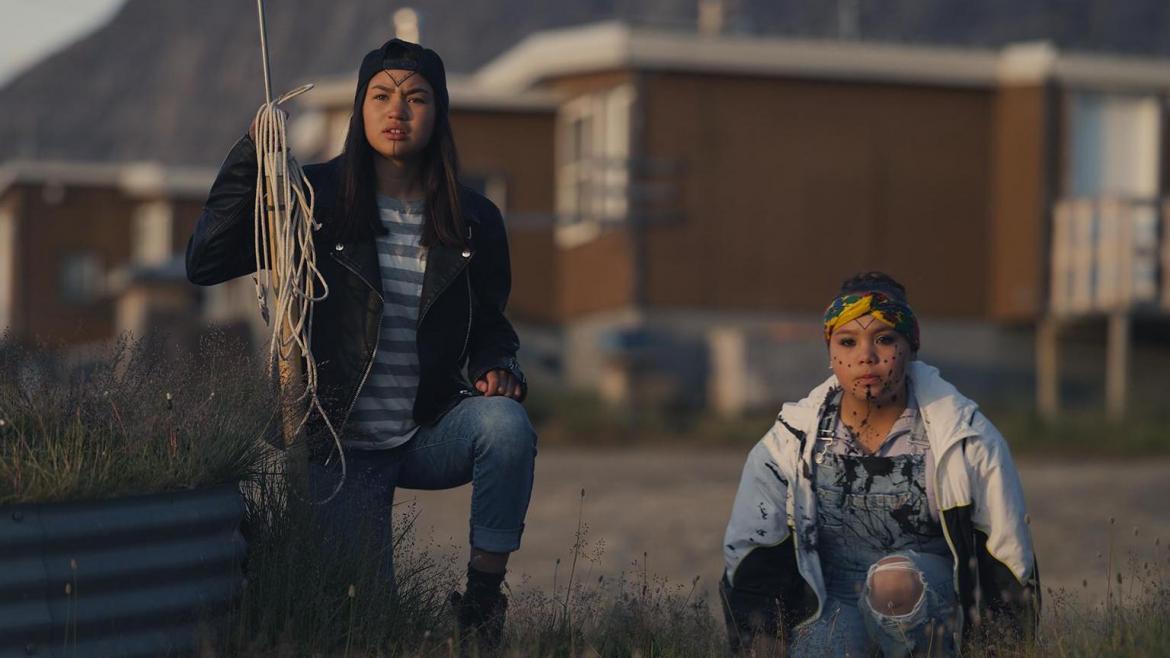
Slash/Back (Movie Review)
Screened as part of the 2022 SXSW Film Festival
Pangnirtung, commonly called Pang, is a small Inuit village on Baffin Island in the Canadian territory of Nunavut. Located on the edge of the Arctic Circle, the only way for the rest of the world to reach Pang is by airplane. If you’re an extraterrestrial looking to discreetly invade the Earth, an isolated and unnoticed place like Pang is not a bad place to start. Or at least it wouldn’t be, if it weren’t for those meddling kids; in this instance a group of tween Inuit girls who will stop an alien invasion if that’s what it takes to make it to the cutest boy in town’s party.
It’s hard to talk about Slash/Back without relying on a couple of hard-to-avoid comparisons. The shapeshifting aliens and Arctic setting of The Thing is such an immediate touchstone that the movie lampshades it by having characters directly reference John Carpenter’s masterpiece. Attack the Block is also an obvious forebearer for the kids-vs-creatures set up, swapping out the urban South London council flat setting for a sleepy and secluded indigenous community. While it might sound overly derivative, Slash/Back always feels fresh due to its commitment to represent a unique place and culture that is rarely depicted in mainstream films. In a modestly budgeted film like this, the production value of the story playing out in front of the breathtaking mountains and vistas of Baffin Island is hard to understate.
The contours of the movie are familiar to anyone who has seen an alien creature feature. In this case, the ETs are some kind of unfathomable tentacle-y worm masses that like to wear the skin of Earth creatures like a badly tailored suit. Initially the effects are CG-driven, as we see the invaders shuffling around in polar bear skins, but by the time they make the leap into humans they’re portrayed by contortionists wearing harrowing Leatherface-esque skin masks. It’s a spot-on match of creature design and performance that really makes it feel like what you’re seeing is a gross sinew-y worm-thing awkwardly puppeting a loosely fitting skin suit.
Where the movie is less successful, and what is likely to be the deciding factor that will sort out those who embrace it from others who are less impressed, is in the performances of the child actors who are tasked with carrying the movie. To put it bluntly, the performances are stilted and unpolished across the board. Kudos to director Nyla Innuksuk for casting the movie entirely from the actual native community in which it is set, but the downside of that approach is that she didn’t get lucky and find some hidden gems-in-the-rough with innate acting ability. The performances are about at the level of a random middle school play. You can practically see the script on-screen with every line reading and it’s distracting enough that anyone who is unable to just accept the wooden performances and move on might have a hard time getting through the movie.
A much more successful example of representation comes from singer Tanya Tagaq’s contributions to the soundtrack. Tagaq introduced the unforgettable sound of Inuk throat singing to a wider audience through collaboration with artists like Bjork and Mike Patton and her rhythmic grunts and growls set a perfectly visceral and animalistic tone for the movie. If all the elements had clicked into place as cleanly, Slash/Back could well have become a new minor sci-fi horror classic. Regardless, it’s hard to complain too much when underheard voices get amplified in the pursuit of making a kickass genre movie.

